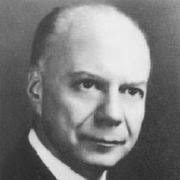Overview
Reserve material in prokaryotic cells are stored in the cytoplasm in the form of
inclusion bodies. These are not bounded by any membrane system and lie free in
the cytoplasm. Inclusion bodies include phosphate granules, cyanophycean
granules and glycogen granules. Some other inclusion bodies maybe surrounded by
a single layer non unit membrane which is 2 nanometers thick.
Discovery

Fritz Jacob
Heinrich was a German-born American neurologist, discovered inclusion
bodies.
Fritz Jacob Heinrich Lewy described the pathology of Paralysis agitans
[Parkinson disease] and was the first to identify eosinophilic inclusion
bodies in neurons of certain brain nuclei, later known as Lewy bodies, the
pathological signature of the Lewy body diseases.
 Fritz Jacob
Heinrich was a German-born American neurologist, discovered inclusion
bodies.
Fritz Jacob
Heinrich was a German-born American neurologist, discovered inclusion
bodies.
Comments
Post a Comment